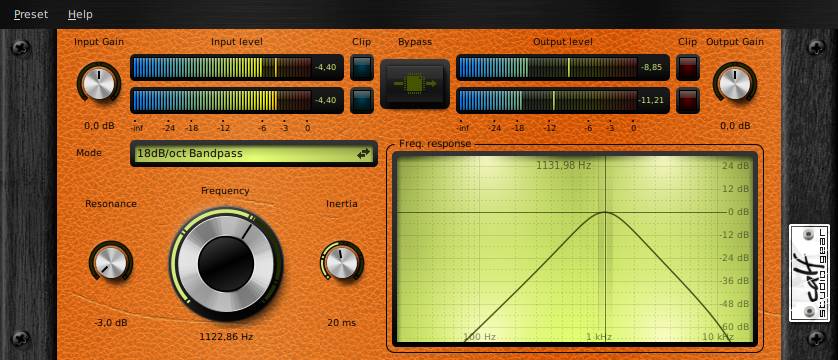Filter

Functionality
A filter is used to remove defined parts of a frequency spectrum. It can cut away everything above or below a defined frequency or remove anything around it for example. A filter is used to fix noisy tracks, remove rumbling from vocal recordings, drums from cymbal microphones and so on or to create special effects like old radios or telephones. It sounds great on electro/techno/dance synthesizers if automated. An inertia function smoothes the animations.
The quality of the filter can be chosen in three levels. Every level a filter stage is added. The higher the amount of filter stages the steeper the rolloff of the filter is.
Tips
Please note:
All values stated here are not the wisdom of mankind. They should only act as an indicator to have a look at or to give you some inspiration for your own experiments.
Only trust your ears!
To produce one of those rising filter sounds often used on synths, drumloops or complete mixes in electronic music use a lowpass filter with a higher resonance. Set the frequency below 100Hz and automate it over some bars to go above 10kHz. Use the inertia if you hear uneven changes in the frequency.
Use a highpass below 80-100Hz to cut off impact noise from a vocal recording.
If you need an acoustic recorded drumset in modern dry productions cut away rumbling and booming sounds from the overheads. The lower end of the snaredrum can also be removed from the hihat track. Achieve this with a highpass somewhere between 300 and 800Hz (depending on "dryness" level).
If you have some noise on your e-bass line (not metal or hardcore - it doesn't really matter there anyway) you can cut away everything above 3-5 kHz.
To create a simple oldschool sound process your signal with a bandpass around 1000Hz. More complex sounds could be better done with an equalizer since you have a lot more options to cut away or accentuate the spectrum. Tips on this point can be found in the Equalizer 12 Band manual.
Controls
- Mode: Choose the type of the filter
- Resonance: Add an accentuation to the center frequency. Used on a bandpass the surrounding frequencies are decreased in level and the band gets more narrow, a bandreject is narrowed down to a thin needle
- Frequency: The center or cut-off frequency of the filter
- Inertia: Smoothen your automated jumps between frequencies